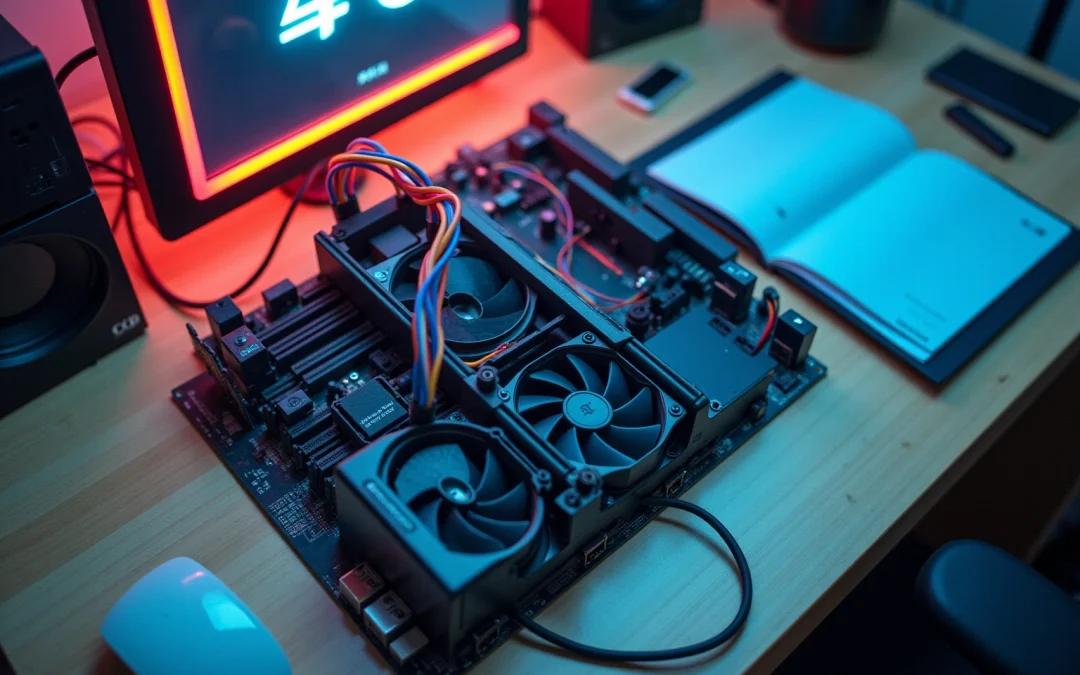Overview
The article delves into various methods and solutions for controlling fan speed in electronic systems, underscoring the critical importance of temperature regulation, energy efficiency, noise reduction, and component longevity. It presents a detailed, step-by-step guide for implementing fan speed control, encompassing:
- BIOS settings
- Software applications
- Hardware adjustments
Additionally, it addresses common troubleshooting issues that may arise during the process. This comprehensive guide serves as an essential resource for optimizing fan performance, ensuring that users can effectively enhance their electronic systems.
Introduction
Mastering fan speed control is crucial for optimizing performance across a range of electronic systems, from personal computers to industrial machinery. Effective management of fan speed not only improves temperature regulation and energy efficiency but also fosters a quieter working environment and extends the lifespan of essential components.
However, many individuals encounter obstacles when trying to implement these controls: what methods yield the best results, and how can one effectively troubleshoot common issues?
This guide explores practical techniques and solutions for mastering fan speed control, ensuring optimal system performance and reliability.
Understand the Importance of Fan Speed Control
is essential in electronic systems for several key reasons:
- Temperature Regulation: Maintaining optimal operating temperatures is crucial for electronic components. Understanding how to is crucial for effective fan rotation management to prevent overheating, which can lead to component failure. Studies indicate that optimizing fan performance can reduce energy consumption by up to 50%, directly contributing to improved thermal management. , offers a broad product line of DC input tube axial fans and centrifugal blowers, available in sizes from 15 to 280mm. These products are optimized for performance and efficiency, ensuring across various applications.
- : Modifying fan rates according to real-time demand can result in significant energy savings. Implementing can provide insights on how to control fan speed to achieve energy savings of 20-50%, aligning with sustainability objectives and lowering operational expenses. Gagner-Toomey Associates’ innovative are designed to enhance energy efficiency, making them ideal for both electronics and automotive applications.
- Noise Reduction: Operating fans at reduced rates can significantly lower noise levels, creating a more pleasant working environment. This reduction in noise not only enhances worker concentration but also contributes to overall productivity. The low-noise design of Gagner-Toomey Associates’ cooling solutions supports quieter operations in sensitive environments.
- Understanding how to control fan speed effectively minimizes wear and tear on electronic components by preventing overheating, thereby . This proactive approach can extend the lifespan of critical components, ensuring reliability in various applications, from industrial machinery to medical devices. Gagner-Toomey Associates offers a complete portfolio of cooling solutions, including integrated custom designs that enhance component longevity.
Understanding these factors is vital for engineers and technicians aiming to optimize their systems and enhance performance. Regular maintenance tasks, such as cleaning and inspecting fans, should include checking for dust accumulation and ensuring proper airflow to maintain optimal and longevity.
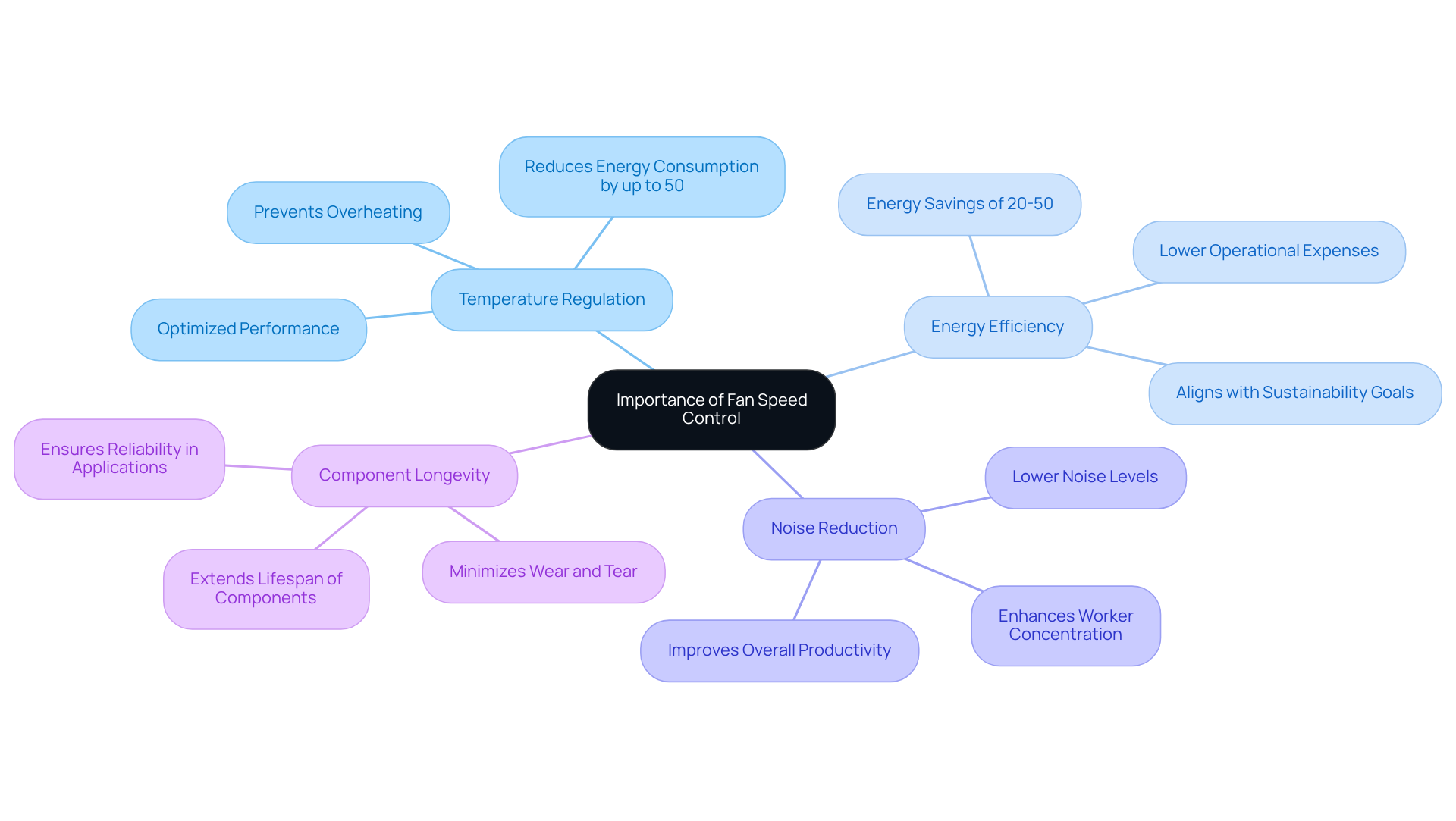
Explore Methods for Controlling Fan Speed
There are several methods for how to control , each offering unique advantages tailored to specific applications.
- : Many computers enable users to modify fan rates directly through the BIOS. This dependable approach ensures that fan rotations automatically adjust according to real-time temperature measurements, thereby enhancing thermal management.
- : Applications such as MSI Afterburner and Fan Control show [how to control fan speed](https://gagner-toomey.com/4-steps-for-effective-fan-control-pwm-implementation) in real-time based on system temperatures. This method is particularly favored by PC enthusiasts aiming to fine-tune their cooling solutions for . The automatic fan-speed regulation loop can utilize for precise temperature measurement, which illustrates how to control fan speed for optimal cooling.
- PWM (Pulse Width Modulation) technology demonstrates how to control fan speed by modifying the width of the electrical pulses delivered to the fan, allowing for accurate rotation while preserving high efficiency. PWM units can operate at rates as low as 30% of their rated capacity, significantly reducing the risk of motor stalling compared to conventional DC units. A case study highlights that outperform DC fans in terms of variability and efficiency, making them particularly effective as CPU coolers.
- : Adjusting the voltage supplied to the fan is a common method for speed regulation, especially in simpler systems. However, this technique may lead to inefficiencies, as it does not provide the same level of regulation in how to control fan speed as PWM. Efficiency comparisons indicate that delivers superior performance relative to basic voltage management methods.
- : In industrial environments, VFDs are employed to regulate the pace of AC motors, yielding significant energy savings and performance enhancements. VFDs can control motor rates from 10% to 200%, making them suitable for applications with fluctuating load requirements. This capability underscores their effectiveness in managing fan performance within complex systems. Comair Rotron’s fan systems have been trusted for over 50 years, offering adaptability and reliability across various applications.
In conclusion, each method presents distinct benefits, and choosing the optimal selection depends on understanding how to control fan speed based on the specific needs of the application, such as efficiency, noise management, or real-time responsiveness.
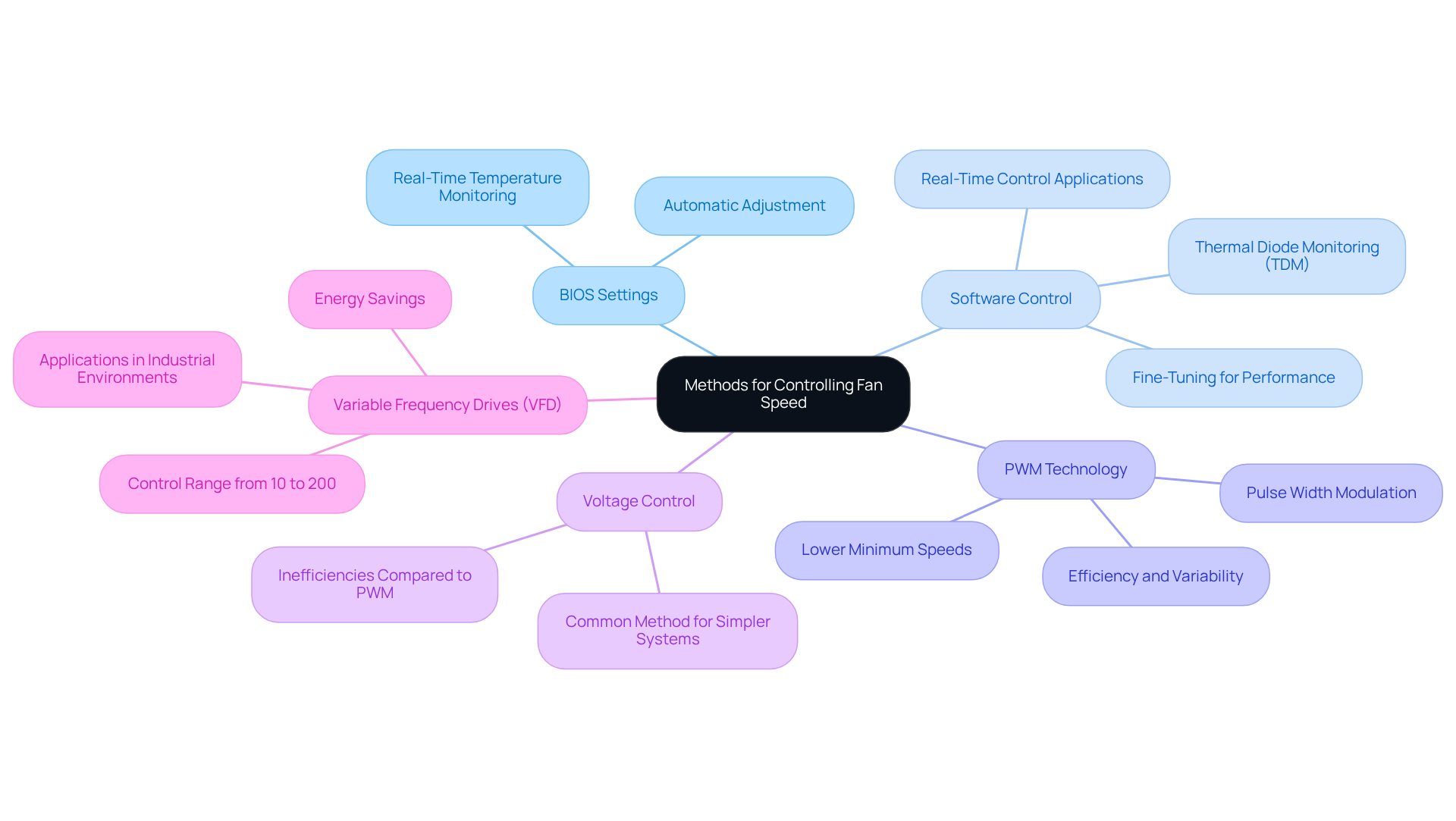
Implement Fan Speed Control: Step-by-Step Instructions
To implement effectively, follow these steps:
- Identify Your Setup: Determine whether you are managing a PC, HVAC unit, or industrial machinery, as this will affect your choice of control method.
- Access BIOS Settings (for PCs):
- Restart your computer and enter the BIOS setup (usually by pressing DEL or F2 during boot).
- Navigate to the hardware monitoring section.
- Adjust the fan speed settings according to your preferences, such as setting fan curves based on . Active cooling typically initiates at 50°C, while passive cooling starts at 60°C. ACPI compliant systems should signal limit crossings at 5°C intervals.
- Install Control Software (for PCs):
- Download and install like MSI Afterburner or Fan Control.
- Open the software and configure the , ensuring compliance with ACPI standards for optimal performance.
- Connect Fans to (if applicable):
- Ensure your fans are connected to the motherboard’s PWM headers for optimal control. PWM devices can reduce speed to as low as 20% of their rated velocity, offering .
- Check the motherboard manual for specific header locations.
- Adjust Voltage (for simple systems):
- If using voltage control, connect the fan to a variable resistor or a fan controller that allows voltage adjustments. Continuous operation of DC motors requires supplying the minimum voltage rating to prevent stalling.
- Gradually increase or decrease the voltage to attain the desired airflow, keeping in mind that DC motors have limitations on how much velocity can be reduced.
- Test and Monitor:
- After making adjustments, and fan performance. The from DC fans can provide feedback on rotation rate, allowing for precise adjustments.
- Make additional modifications as needed to enhance cooling and noise levels, as acoustic noise rises with fan rotation, complicating the balance between cooling efficiency and noise reduction. Ken W. Gay observes that provides numerous benefits to enhance cooling design and minimize acoustic noise emissions.
By following these steps, you will understand how to control fan speed in your system, while addressing common fan management issues.
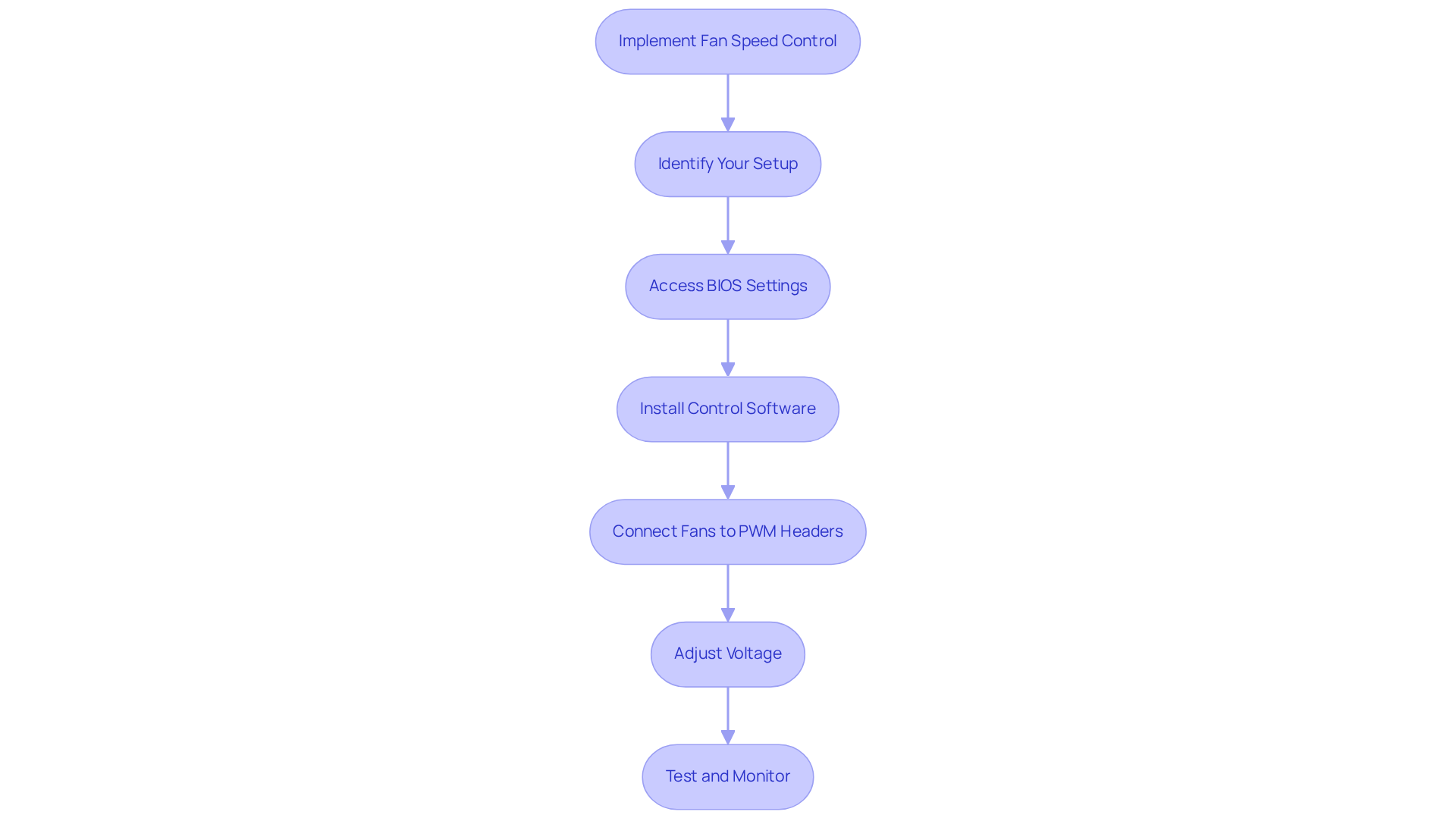
Troubleshoot Common Fan Speed Control Issues
When implementing , several common issues may arise:
-
Fans Not Responding to Control:
- Ensure fans are connected to the appropriate headers ().
- Verify BIOS settings to confirm that .
- If using software, check that it has the necessary permissions to operate.
-
Inconsistent Fan Speeds:
- Confirm that the in the software or BIOS are correctly configured.
- Examine any that could influence readings, as inaccuracies can result in incorrect fan adjustments. Notably, by 5% to 10% when new, complicating adjustments.
-
:
- Inspect fans for dust accumulation or mechanical issues that may contribute to noise.
- Consider adjusting fan settings to lower levels during idle operations to minimize sound levels. Understanding the is crucial for maintaining a comfortable environment, particularly in sensitive applications.
-
Overheating Components:
- Ensure fans are functioning properly and are not obstructed by debris.
- Reevaluate to ensure they meet the thermal load requirements, as insufficient cooling can lead to overheating. Case studies, such as “Temperature-Based Fan Control,” underscore the importance of to prevent overheating.
-
Software Conflicts:
- If multiple software solutions are used for fan control, conflicts may occur. It is advisable to choose one main software to efficiently manage fan performance. The N+1 technique, as discussed in relevant case studies, can help mitigate issues during fan failures by ensuring redundancy.
By following these troubleshooting steps, you can effectively learn how to control fan speed and address common problems, ensuring optimal performance and reliability. As Tim De Stasio emphasizes, mastering fan laws and understanding these troubleshooting techniques distinguishes engineers in their ability to optimize system performance.
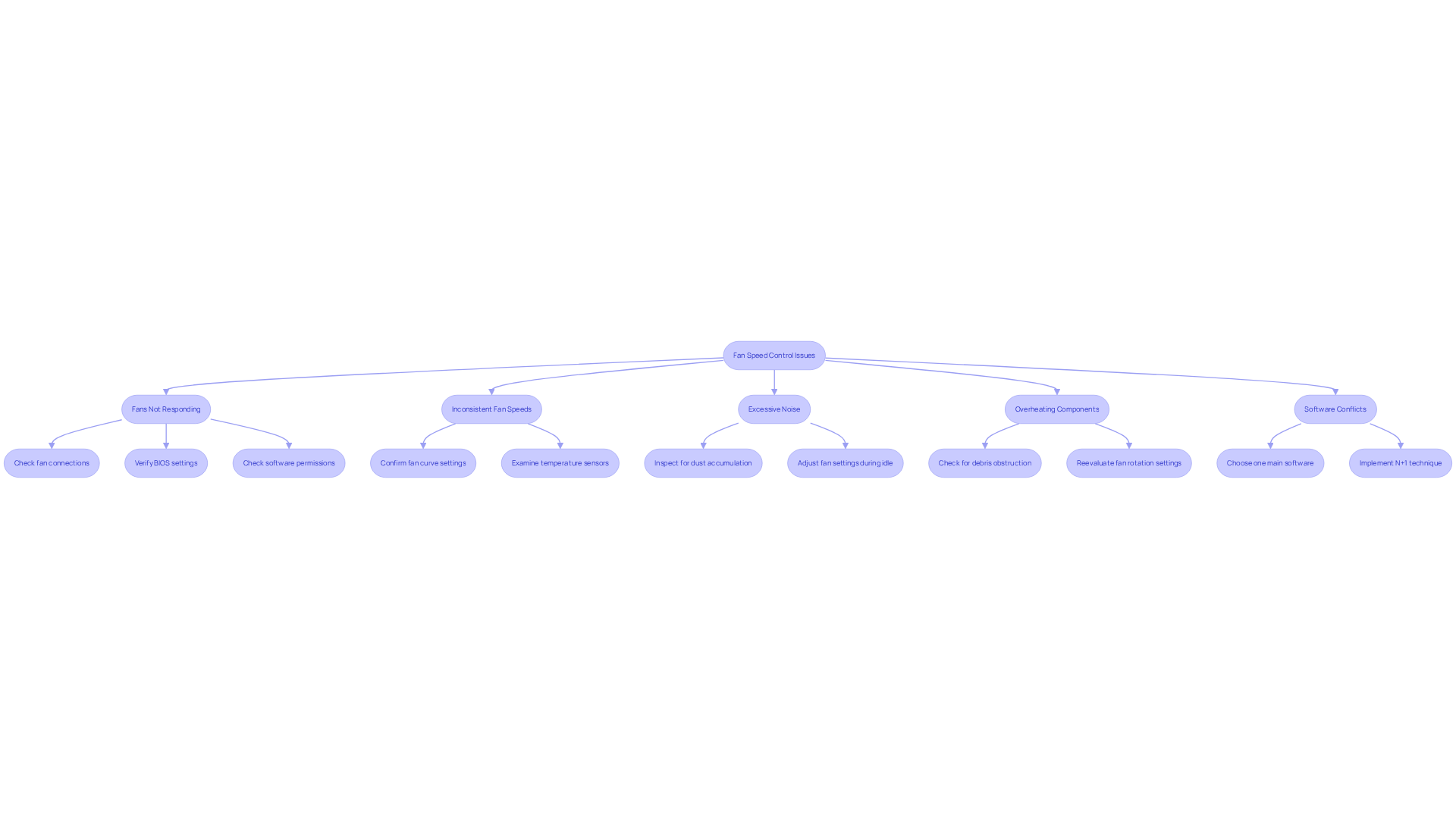
Conclusion
Mastering fan speed control is indispensable for optimal performance in diverse electronic systems, ranging from personal computers to industrial machinery. Regulating fan speed not only improves temperature management and energy efficiency but also fosters a quieter environment and extends the lifespan of critical components.
This guide has explored several key methods, including:
- BIOS settings
- Software control
- PWM technology
- Variable frequency drives
Each method presents distinct advantages tailored to specific applications, underscoring the necessity of selecting the right approach based on individual requirements. Furthermore, we have addressed troubleshooting common fan speed issues, such as inconsistent speeds and excessive noise, to facilitate seamless implementation and maintenance.
Ultimately, a comprehensive understanding of effective fan speed control is crucial for engineers and technicians aiming for excellence in system performance. By applying these techniques, significant energy savings can be realized, operational efficiency enhanced, and a more comfortable working environment created. Embracing these practices not only fosters improved performance but also highlights the broader implications of fan speed control on sustainability and reliability within electronic systems.
Frequently Asked Questions
Why is fan speed control important in electronic systems?
Fan speed control is crucial for temperature regulation, energy efficiency, and noise reduction, which collectively help prevent overheating, reduce energy consumption, and create a better working environment.
How does fan speed control affect temperature regulation?
Controlling fan speed helps maintain optimal operating temperatures for electronic components, preventing overheating that can lead to component failure. Optimizing fan performance can reduce energy consumption by up to 50%.
What energy savings can be achieved through fan speed control?
By modifying fan rates according to real-time demand, advanced fan control systems can achieve energy savings of 20-50%, contributing to sustainability objectives and lowering operational expenses.
How does fan speed control contribute to noise reduction?
Operating fans at reduced rates lowers noise levels, which enhances worker concentration and overall productivity, especially in sensitive environments.
What impact does effective fan speed control have on component longevity?
Effective fan speed control minimizes wear and tear on electronic components by preventing overheating, which can extend the lifespan of critical components across various applications.
What maintenance tasks should be performed to ensure optimal fan performance?
Regular maintenance should include cleaning and inspecting fans, checking for dust accumulation, and ensuring proper airflow to maintain optimal fan curve performance and longevity.

